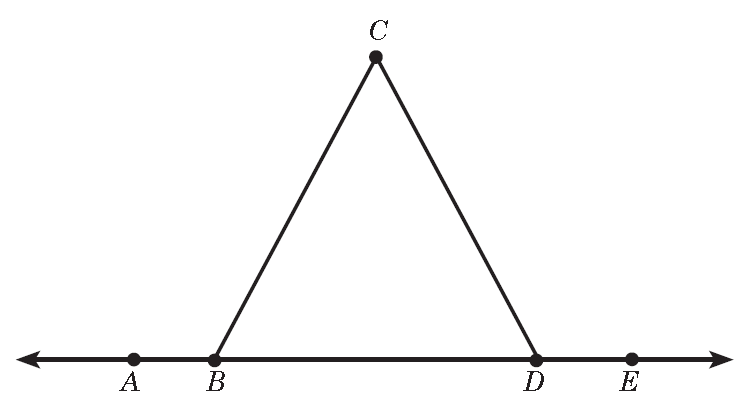Identify the missing statements or reasons that will complete the two-column proof. Type the letter of your answer in each blank.
| Given: |
Points A, B, D, and E are collinear. |
| Prove: | is an isosceles triangle. |

Choices:
| a. | Vertical Angles Theorem |
| b. | Definition of linear pair |
| c. | Linear Pair Postulate |
| d. | Definition of isosceles triangle |
| e. | |
| f. | |
| g. | |
| h. | SSS Congruence Postulate |
Proof:
| Statements | Reasons | ||
|
1.
Points A, B, D, and E are collinear.
|
1. Given
|
||
|
2.
and form a linear pair.
and form a linear pair. |
|
||
|
3.
and are supplementary.
and are supplementary. |
|
||
|
4. Supplement Theorem
|
||
|
5. Converse of the Isosceles Triangle Theorem
|
||
|
6.
is an isosceles triangle.
|
|


